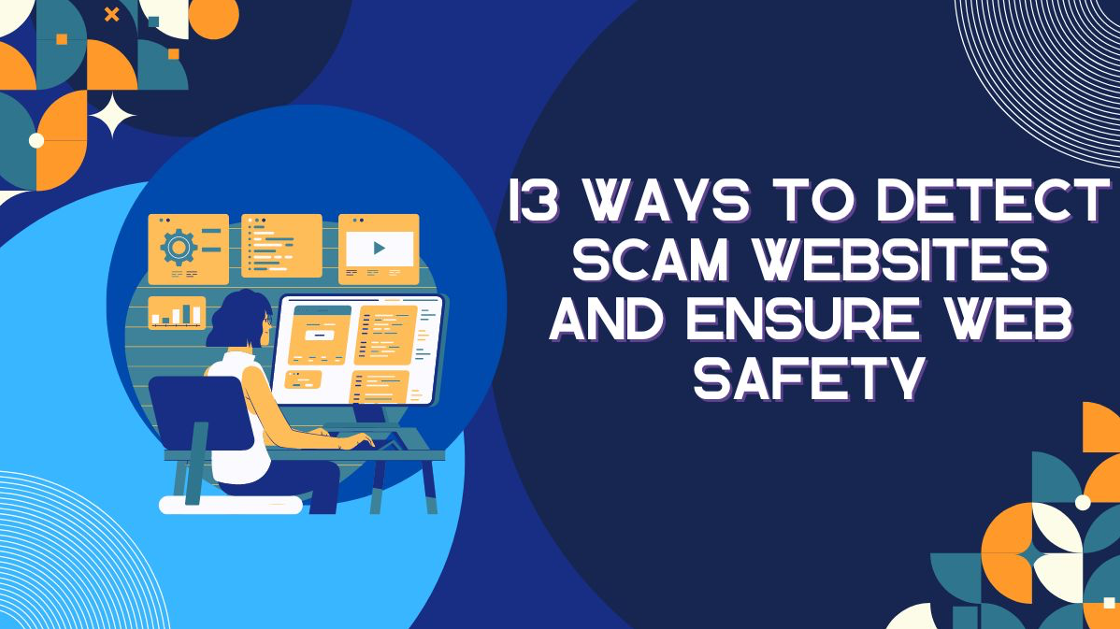
In today’s life, Every person is involved in digital interactions, online transactions, and virtual connections, and the rise of scam websites has become a serious concern. Scammers employ different tactics to scam innocent individuals, emphasizing the need for heightened awareness and effective strategies to identify and combat potential threats. This comprehensive guide delves into thirteen powerful strategies to detect scam websites, fortify web safety, and underscores the importance of incorporating web safety checkers into your online routine.
1. Check the Website URL
Initiate your scam detection process by meticulously examining the website's URL. Legitimate websites typically boast clear and recognizable domain names, providing users with a sense of trust and authenticity. Exercise caution when confronted with URLs featuring misspellings, extraneous characters, or unconventional domain extensions. Prioritize websites with the secure "https://" protocol, indicative of a commitment to user data encryption and a foundation for a secure connection.
2. Utilize a Web Safety Checker
Increase your web safety with online resources and tools dedicated to identifying and cataloging scam websites. Platforms like Scamadviser, Google Safe Browsing, or your preferred web safety checker analyze various factors and user reports to assess the trustworthiness of a given site. Incorporating these tools into your web safety routine adds a layer of protection against potential scams.
3. Verify Contact Information
Scam websites often operate in the shadows, lacking transparent and easily accessible contact information. Legitimate businesses, committed to building trust, provide clear avenues for communication, including a physical address, phone number, and email address. Users should exercise caution if this information is missing or appears dubious, recognizing it as a significant red flag warranting further scrutiny.
4. Evaluate Website Design and Content
The professionalism and attention to detail in a website's design and content serve as critical indicators of its legitimacy. Users should approach websites with poor graphics, inconsistent layouts, or grammatical errors with skepticism, as these are common traits of scam websites. Legitimate platforms invest in a polished appearance, reflecting a commitment to professionalism and user experience.
5. Check for Customer Reviews and Ratings
Before engaging with a website, conduct due diligence by seeking customer reviews and ratings. Genuine customer experiences provide valuable insights into the legitimacy of the platform. A lack of reviews should raise caution, and extra scrutiny is necessary if existing reviews seem overly positive or generic. Additionally, explore multiple review sources to ensure a comprehensive understanding of the website's reputation.
6. Beware of Too-Good-To-Be-True Offers
Scammers frequently employ enticing offers, discounts, or promotions to deceive users into providing personal information or making purchases. Users should approach such offers with a healthy dose of skepticism, recognizing that scammers leverage these tactics to exploit individuals. Websites making extraordinary promises without a reasonable explanation should be viewed cautiously, prompting users to question the authenticity of such offerings.
7. Look for Secure Connection Indicators
Legitimate websites prioritize user security through the implementation of encryption technologies. Visual cues such as a padlock icon in the address bar or a URL beginning with "https://" signal encrypted data transmission. These indicators serve as crucial safeguards, protecting personal and financial information from potential interception by malicious entities.
8. Monitor Social Media Activity
Scams often get exposed on social media, where users share their experiences. Following reputable accounts that highlight potential scams and provide safety tips can contribute to your overall web safety.
9. Educate Yourself on Common Scam Tactics
Understanding common tactics, such as phishing emails or fake login pages, empowers users to recognize potential threats before falling victim to scams.
10. Set Strong Passwords
Using unique and robust passwords for each online account helps prevent unauthorized access. Regularly updating passwords adds an extra layer of security.
11. Enable Two-Factor Authentication
Activating two-factor authentication whenever possible provides an additional layer of protection against unauthorized access.
12. Regularly Update Software and Security Software
Keeping your operating system, browsers, and security software up-to-date is crucial to patch vulnerabilities. Regular scans with security software can detect and remove potential threats.
13. Be Skeptical of Unsolicited Emails and Messages
Avoid clicking on links or downloading attachments from unknown or suspicious emails. Verify the sender's identity before providing any personal information.
 FAQs About Web Safety
FAQs About Web Safety
Look for "https://" in the URL and a padlock icon in the address bar.
Be cautious. Lack of reviews can be a red flag; consider using web safety checkers for more insights.
Not always, but be skeptical. Do extra research if an offer seems too good to be true.
It's risky. Legit sites provide clear contact details. If a website lacks this info, think twice.
Make it a habit, especially for new websites. Regular checks add an extra layer of protection against scams.
Final Thoughts on Web Safety
In this fast-changing world, safeguarding oneself from scam websites requires a multifaceted approach. Vigilance, critical thinking, and strategic utilization of available tools, including reliable web safety checkers, are essential components of a secure online experience. By adopting the strategies outlined in this comprehensive guide, individuals can enhance their ability to discern potential scams, ensuring both informed and proactive web safety practices.
Share this post
Leave a comment
All comments are moderated. Spammy and bot submitted comments are deleted. Please submit the comments that are helpful to others, and we'll approve your comments. A comment that includes outbound link will only be approved if the content is relevant to the topic, and has some value to our readers.

Comments (0)
No comment